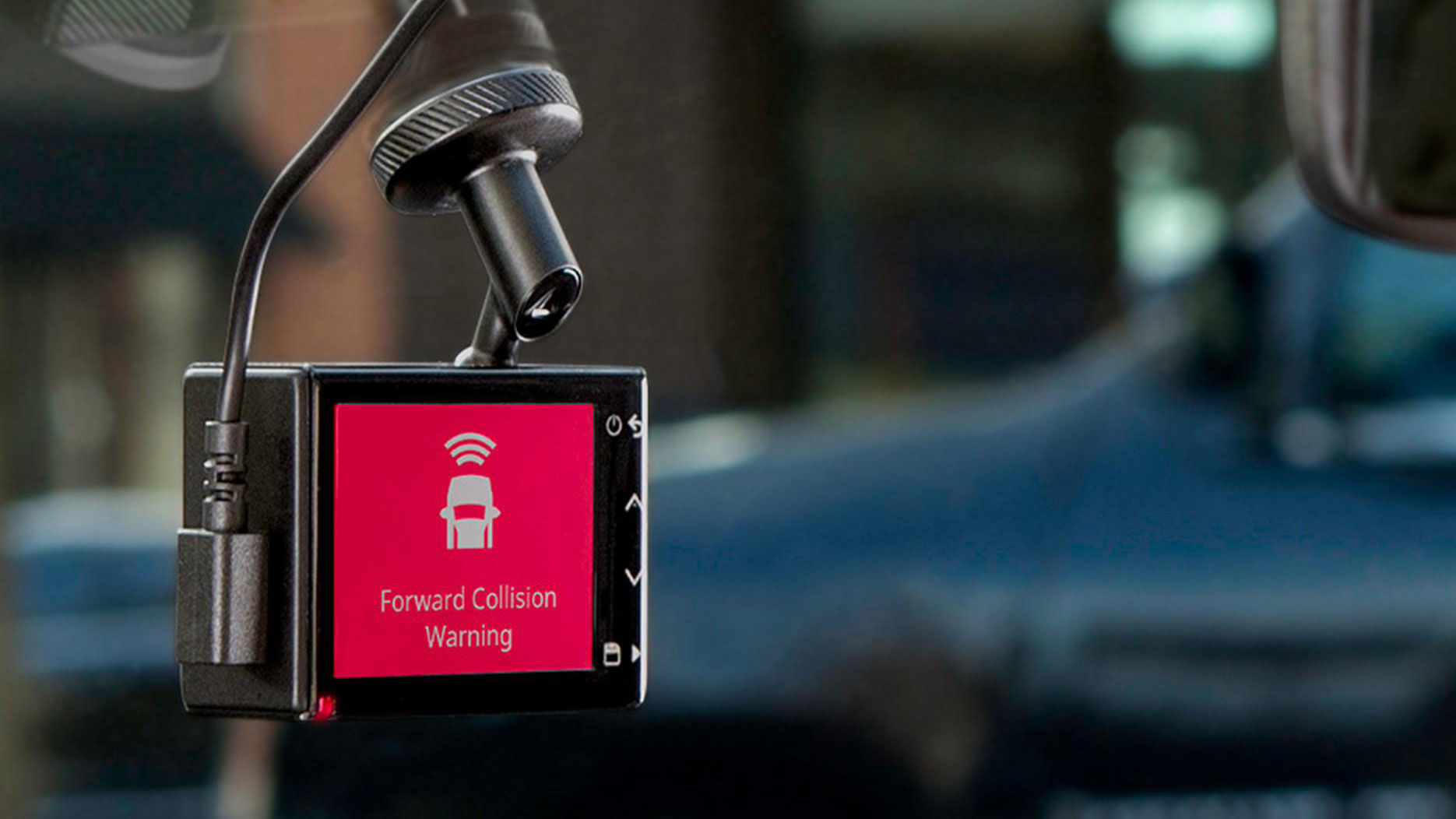It even offers useful voice control, so you can say “Okay Garmin, save video” to ensure what’s just happened isn’t recorded over when the memory card is full.
Garmin Dash Cam 55 Plus: Price & availability
If the Dash Cam 55 Plus seems familiar, it’s because it’s the Dash Cam 55 (which launched in 2017) with a polariser fitted and lifetime safety camera updates. Given that the safety camera database was something you had to subscribe to on an annual basis, this makes the 55 Plus a considerably better deal, especially as you can buy it for £119 from Halfords (where is it exclusively available). At the recommended price of £149, it’s not quite such a steal, though. For alternatives, see our roundup of the best dash cams.
Design and features
Although the lens sticks out quite a bit, this is one of the smallest dash cams around yet it still manages to squeeze in a 2in screen. We particularly like the low-profile magnetic mount which keeps the camera from blocking the passenger’s view of the road and also makes it the easiest dash cam to remove from view when you park up. All that’s left on the screen is a tiny magnet held in place with an adhesive pad. A spare pad is included in the box if you ever need to move it or if you change cars.
We also like that there are real buttons: touch-sensitive buttons are a pain to use. The only issue is that in the UK with a right-hand-drive car, the buttons are on the wrong side to be easily accessible behind the rear-view mirror. The menu system isn’t entirely intuitive, but it’s perfectly usable once you get used to it. You can turn on and off any of the driver aids (and adjust sensitivity), choose which information is included on the recorded video (time & date, location, speed) and pick the resolution and frame rate to record at.
You’ll likely pick the top resolution, 1440p as it offers the most detail, but is limited to 30fps. If you drop to 1080p you can pick 60fps or HDR, but not both together. The 720p, 30fps mode is just there if you need smaller files to extend recording time. An 8GB card is included, but you’ll want to buy a larger capacity as 8GB is only enough for an hour of footage. Cards up to 64GB are supported. The microUSB port is on the left, but the included power cable is designed so it runs directly up to your car’s headliner. Again, the only snag is that it terminates in a cigarette lighter adapter rather than a standard USB connector, so you can’t use your car’s 12V socket for anything else if you’re using the dash cam. The alternative is to buy Garmin’s Parking Mode Cable, which is unnecessarily expensive at £29.99 ( £20 from Halfords). This is a hard-wiring kit that detects when the ignition is switched off. The camera turns off but will wake and record clips when motion is detected. Driver aids include the common lane-departure warning and forward collision warning, but as ever these tend not to be nearly as good as those built into modern cars and quickly become annoying. More useful is the ‘Go’ alert which tells you that traffic has moved away in front you, in case you lose concentration at the lights or in a traffic jam.
Plus, the safety camera database means you’ll be notified of upcoming speed cameras. Just note that this doesn’t work out of the box. You’ll need to download the free Garmin Express app on your PC and plug the dash cam in using the USB cable provided to upload the latest camera locations.
Performance
The voice recognition works well. When we asked it to save a video, it was saved in a separate folder. Similarly “Okay Garmin, take a picture” snaps a photo and saves it in the Photos folder. You can also say “Okay Garmin, start Tavelapse” to begin a time-lapse recording mode which might be useful if you want to record a speeded up journey – perhaps a road trip or a scenic section of road. Quality at the top setting is very good, with plenty of detail and it’s relatively easy to make out text. Detail levels drop when you switch to 1080p, but registration plates are generally still readable. The HDR mode doesn’t look all that different from the standard mode, so there’s little reason to use it. It definitely doesn’t help at night: detail levels were no better than most dash cams. The polariser does make a difference, reducing glare and reflections from the windscreen. Audio recording quality is fine, and you can turn it off (via the menu system) if you don’t want sound. Here’s a screenshot from the 1080p HDR mode during the day and at night:
There’s an app which works with the 55 Plus’ built-in Wi-Fi – Garmin Virb. This is shared with Garmin’s action cameras and allows you to transfer videos to your phone for sharing with your insurance company or just for safe storage. Unusually, there’s no way to adjust the Dash Cam’s settings via the app, nor get a live view (not that you need one). Jim has been testing and reviewing products for over 20 years. His main beats include VPN services and antivirus. He also covers smart home tech, mesh Wi-Fi and electric bikes.




